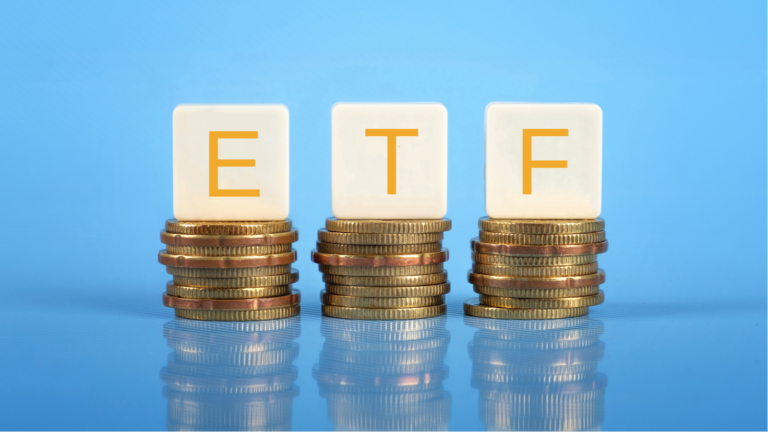The last time I wrote about high-yield ETFs was in early July, when my focus was dividend ETFs whose yields were higher than the iShares Select Dividend ETF (NASDAQ:DVY). At the time, that yield was 3.71%.
I’m going way higher in today’s edition and searching for three of the top high-yield ETFs. Given interest rates are much higher than they were 18-24 months ago, I’ll be able to broaden my search to include fixed-income funds.
The idea for investing in high-yield ETFs came from a recent Yahoo Finance article about covered-call ETFs from JPMorgan. They yield more than 10% and have become very popular with investors. The JPMorgan Equity Premium Income ETF (NYSEARCA:JEPI) has become one of the most popular actively-managed ETFs with over $28 billion in net assets. It has a 12-month rolling dividend yield of 11.45%.
JEPI is a good option if you’re considering investing in high-yield ETFs. Remember that any ETF yielding more than 10% does come with additional risk than a plain vanilla dividend ETF. Govern yourself accordingly.
However, I’ve been tasked with coming up with three ETFs yielding 10% or more, and that’s what I will do.
Saba Closed-End Funds ETF (CEFS)

The Saba Closed-End Funds ETF (BATS:CEFS) gets a five-star rating from Morningstar.com. Launched in March 2017, the ETFs gathered $118 million in net assets. The actively-managed fund has high fees — its total operating expenses are 2.90% including a whopping 1.72% in fees from other funds it’s invested in — but a reasonable annualized return of 8.51% since inception through June 30.
The ETF, as you might be able to tell from the name, focuses on closed-end funds trading at a discount to their net asset value (NAV). The fund is managed by Saba Capital Management, a company founded by Boaz Weinstein in 2009. Weinstein was the co-head of Deutsche Bank’s Global Credit Trading business.
The fund invests in CEFs based on their yield, discount to NAV, and overall quality of securities. It currently invests in 69 holdings, with 51% equity CEFs and 49% fixed income. It also uses leverage.
The ETF’s top holding is the BlackRock ESG Capital Allocation Term Trust (NYSE:ECAT), which has $1.84 billion in net assets. Equity funds account for 66.25% of the portfolio. Fixed income has a 42.17% weighting and uses leverage of 8.43%.
In terms of distributions, it pays a monthly amount of 14 cents. Over the trailing 12 months through June, it paid out $1.95 in dividends and long-term capital gains for a yield of 10.4%.
First Trust Brazil AlphaDEX Fund (FBZ)

The First Trust Brazil AlphaDEX Fund (NASDAQ:FBZ) tracks the performance of the Nasdaq AlphaDEX Brazil Index, a collection of companies selected based on several growth criteria including short-term price appreciation, sales-t0-price ratio, and one-year sales growth. Several value criteria are also considered from book value-to-price ratio, to cash flow to price, and return on assets.
Each company from the Nasdaq Brazil Index is ranked by growth and value factors. The top 50 are selected for the Nasdaq AlphaDEX Brazil Index. They are then divided into quintiles based on their rankings. The higher the ranking of the companies in the quintile, the higher the weighting. All stocks within a quintile are equally weighted, reconstituted, and rebalanced twice a year.
The ETF’s top 10 holdings account for 33.6% of its tiny $6.0 million in net assets. The median market cap of its 50 holdings is $5.44 billion, putting it squarely in mid-cap territory.
Its past four quarterly distributions totaled $1.22 for an 11.2% yield.
VanEck BDC Income ETF (BIZD)

VanEck BDC Income ETF (NYSEARCA:BIZD) is the final of the three ETFs. It tracks the performance of the MVIS US Business Development Companies Index, a collection of business development companies (BDCs) that invest in middle-market privately-held businesses and thinly-traded public companies.
The ETF got its start in February 2013. In the past decade, it’s gathered $645 million in net assets from investors seeking above-average income and capital appreciation.
BDCs must invest at least 70% of their assets in U.S. businesses with a market value of $250 million or less. To avoid paying corporate income taxes, BDCs must pay out 90% of their income. The income is taxed in the hands of individual investors.
To qualify for the index, a BDC must have a market cap of $150 million, a three-month average daily trading volume of $1 million, and at least 250,000 shares traded monthly over the past six months.
When you see the ETF’s total annual fund operating expenses, you might assume the 10.92% figure is a misprint. It’s not. Like CEFS earlier, most of the fees, except its management fee and other expenses of 0.41%, are the fees from the various BDCs held by BIZD. Despite the fee situation, the ETF has doubled its shareholder return over the past decade.
Over the past four quarters, it’s paid out $1.69 in dividends and generated a 12-month distribution yield of 11.0%. It’s important to note that you’ll pay tax based on your tax rate so that the effective after-tax yield will be lower.
On the date of publication, Will Ashworth did not have (either directly or indirectly) any positions in the securities mentioned in this article. The opinions expressed in this article are those of the writer, subject to the InvestorPlace.com Publishing Guidelines.
